Formidable creatures: 8 of the most dangerous scorpions in the world (19 photos)
Venom is one of the most common methods of attack or defense in the animal kingdom, and everyone has probably heard of scorpion venom. However, scorpions aren't as scary as they're made out to be: of the 1,750 scorpion species, only about 50 pose a threat to humans. Which scorpions are the most dangerous? 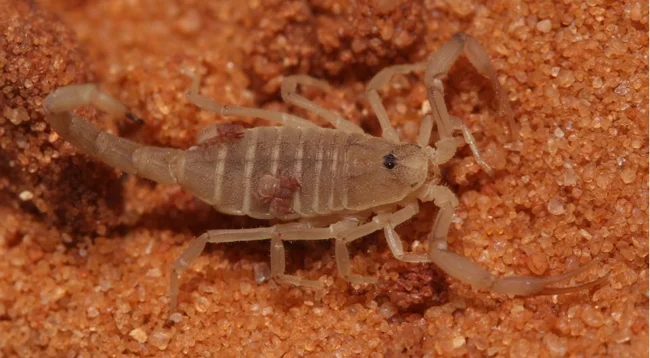
And our festival's invited guests are pseudoscorpions. There they are, riding on their scorpion! Cool, huh?
First Category: Largest Scorpion
Some might say the largest scorpion is the emperor scorpion. This African monster is 20 centimeters long! That's true, and it definitely deserves its award. But do you know what giants once roamed the world? Now we'll take a quick trip to the paleontological museum. After all, the largest scorpions can only be found there now. 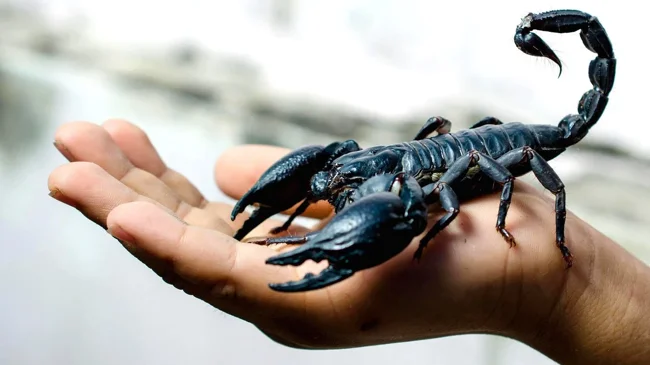
It looks like a black plastic figurine! It's an emperor scorpion.
Pulmoscorpions were frighteningly large arthropods, their body length could reach 70 centimeters! Just imagine a multi-legged, multi-eyed creature the size of a cat! And yet it was armed just like modern scorpions. Underneath the thick armor were powerful muscles, and on its forelimbs were pincers as big as the Pulmoscorpius itself. And, of course, a tail with a venomous needle as thick as a stiletto. And while the composition of the venom is currently impossible to determine, we know for sure that its sting was terribly painful! 
Don't forget to feed your Pulmoscorpions. Or they'll eat you! 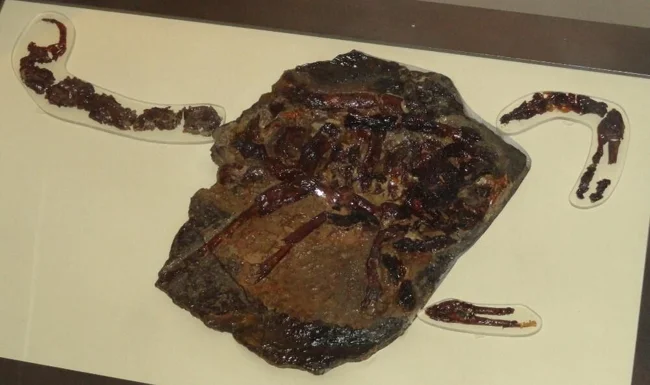
Fossils tell us that such giants lived as long as 330 million years ago.
Second Category: Smallest Scorpion
I could cheat here and give the award to our invited guests, the pseudoscorpions. After all, these guys are absolutely microscopic, just 2-3 millimeters long! So what if they're not true scorpions—at least they're related. So what if they don't have a tail, at least they protect books from pests! 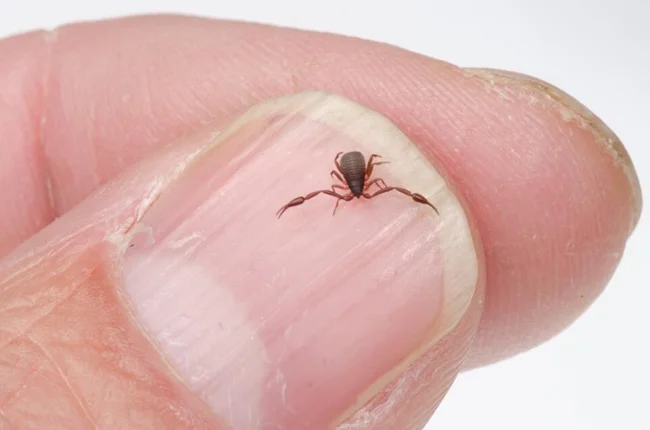
Cuticle specialist.
But we're having a serious event here, and we take awards seriously, so we're giving this one to the small microtitis! This native of the sandy, scrubby coastal plains of the Dominican Republic is far from small: an adult measures about a centimeter from head to tail. And yet, practically nothing is known about it! 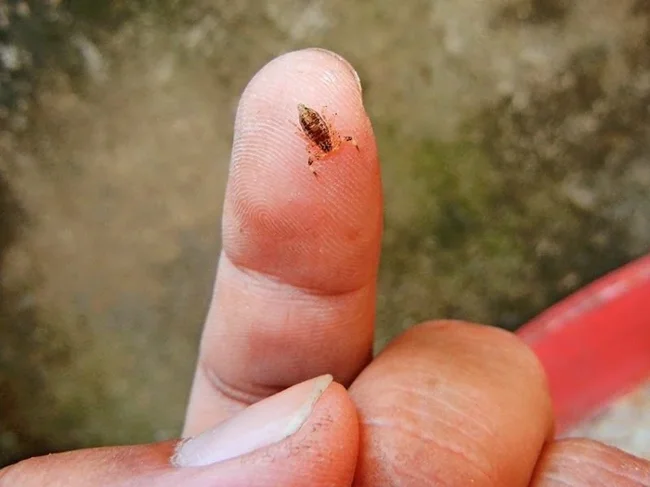
Don't lose it or break it!
Microtitia was discovered only 11 years ago, and since the Dominican Republic is far from the pinnacle of scientific research, it remains virtually unexplored. These scorpions are believed to feed on aphids, fruit flies, microbes, and other tiny creatures. Their venom is also believed to be quite toxic, as smaller scorpions rely more heavily on venom for self-defense. However, the Microtitia's sting is so short and the venom dose so small that it is physically incapable of harming humans. 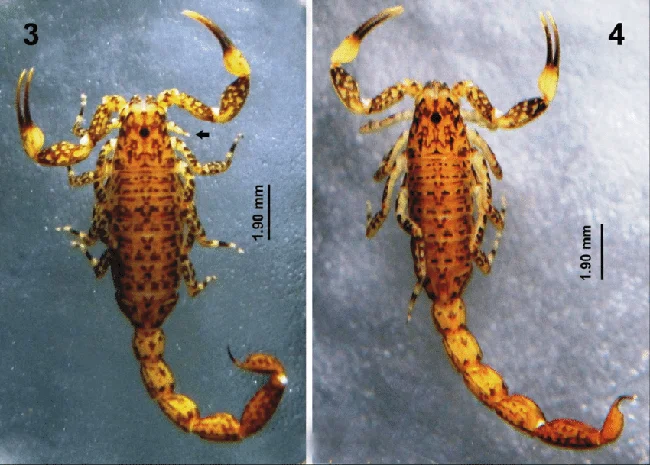
The microtitium may be small, but it's very colorful!
Category Three: The Most Venomous Scorpion
As expected, choosing a winner in this most interesting category proved the most difficult. How can you determine who deserves first place when human testing is prohibited due to its lethal potential? Even bloggers, often willing to do questionable things for popularity, aren't prepared to answer the question of which of these three scorpions is the most dangerous. So, we decided to award three nominees at once. The first of these, the Brazilian yellow scorpion, is undoubtedly the most dangerous in South America. It's not the largest, only 7 centimeters long, and it's not the most aggressive, but the mortality rate from its venom, according to various estimates, ranges between 0.2% and 1%! 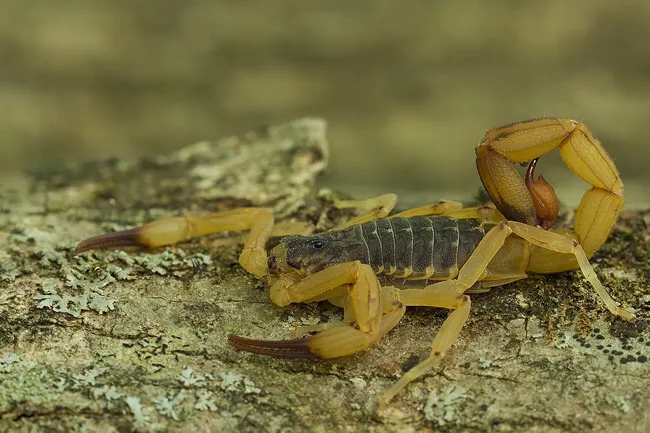
Buenos noches, weaklings!
In the initial stages, a person feels severe pain at the site of the bite. Then, the neurotoxin in the venom forces the body to release excessive doses of hormones into the blood, causing dozens of diverse and dangerous symptoms, including pulmonary edema and cardiac arrest. You wouldn't wish that on even your worst enemy. 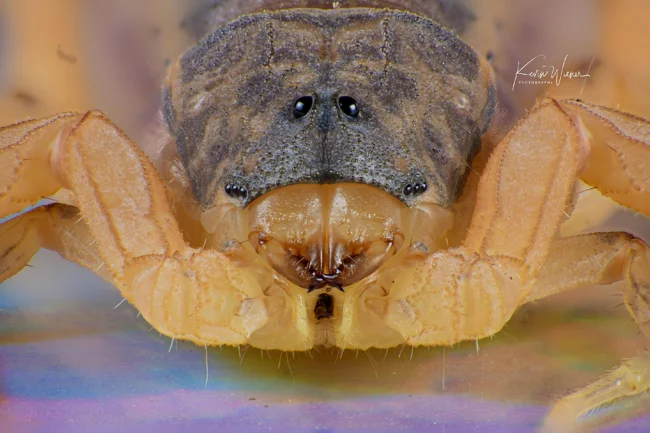
Yellow scorpions' venom is incredibly potent, but that doesn't stop Brazilian toads from eating them. After all, these amphibians have developed an immunity!
The second contender is the fat-tailed scorpion, whose stings go straight to the heart! The primary active ingredients in its venom cause extensive internal bleeding and cardiac dysfunction, while the secondary ones cause muscle spasms, pain, and swelling at the sting site. It's difficult to say whether the fat-tailed scorpion is more dangerous than the yellow scorpion, as there are no data on mortality from its stings. However, studies on mice show that the venom of these two scorpions is approximately the same. 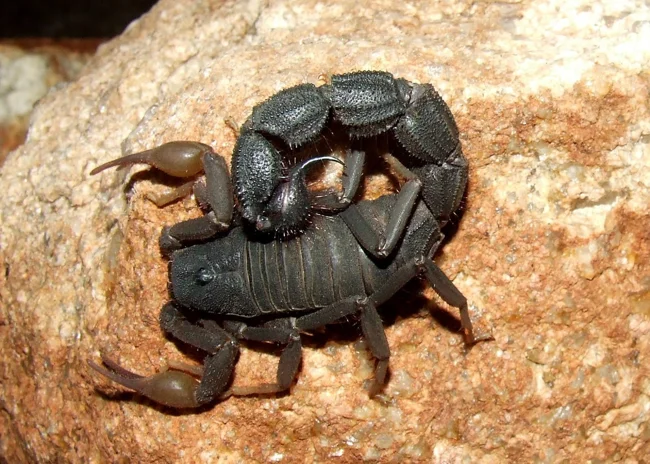
"I'm not fat, I just have big bones!" "But you're an arthropod, you don't have bones." — Damn it...
People in the Middle East and North Africa are very wary of this scorpion. Especially those whose jobs require them to spend a lot of time in desert regions. 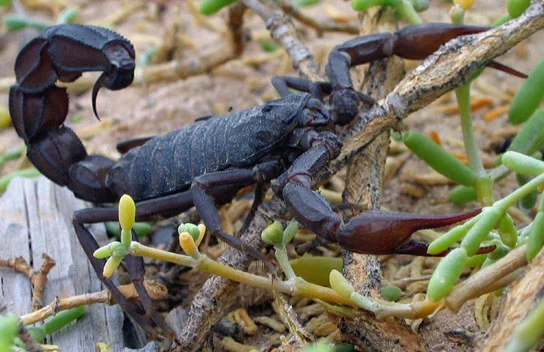
How powerful its tail is!
The Palestinian yellow scorpion is no less dangerous than the others. This is another Middle Eastern species whose venom is a complex cocktail of neurotoxins. It could potentially be even more dangerous than the previous two nominees, as its toxins are more resistant to antivenom. Therefore, all those bitten are placed under medical observation, even if they feel well. 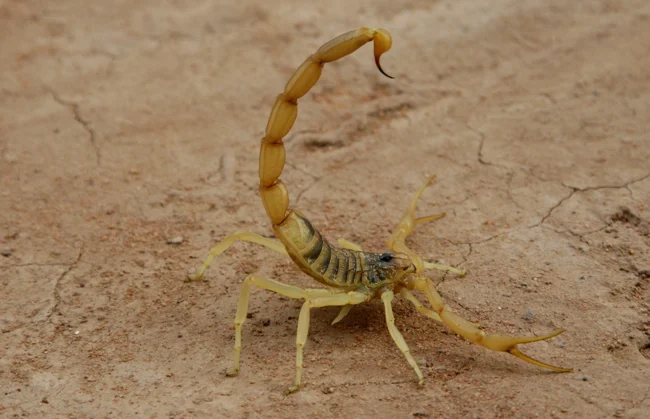
Go ahead, attack!
But the irony is that this scorpion has the potential to save more lives than it has killed. The peptide chlorotoxin (and its derivatives) found in its venom could help treat glioblastoma, an aggressive brain cancer. The treatment's effectiveness has been confirmed, and scientists are currently determining its toxicity, as well as its advantages and disadvantages compared to more traditional therapies. 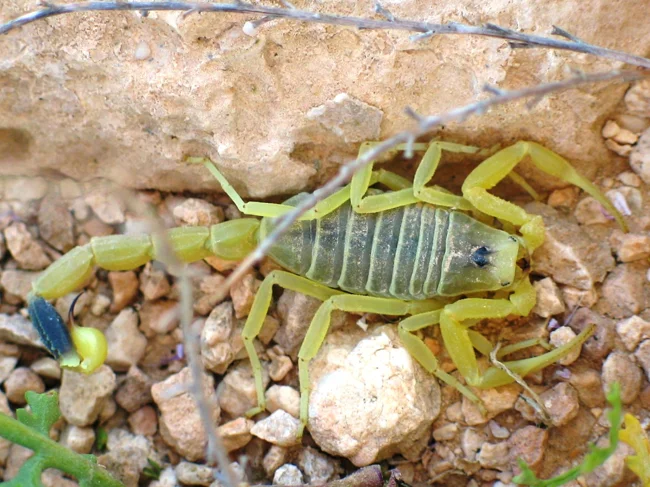
Me? Saving people? Are you kidding me?
Category Four: Most Common Scorpion
To be the most common scorpion, you don't have to be the largest or the most dangerous. You just have to be the most adaptable. And that's what the European yellow-tailed scorpion is. This little scorpion, only 3 centimeters long, originally had a fairly wide range: it's familiar to Italians, the French, and the peoples of Northwest Africa. 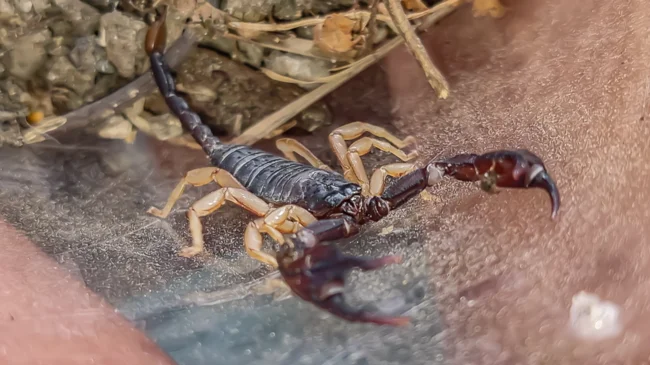
A common London scorpion...
And people treat this scorpion well, because it poses no danger to humans and eats insect pests like crazy. It was probably this very lenient attitude that led to unexpected consequences: the yellow-tailed scorpion became an introduced species. 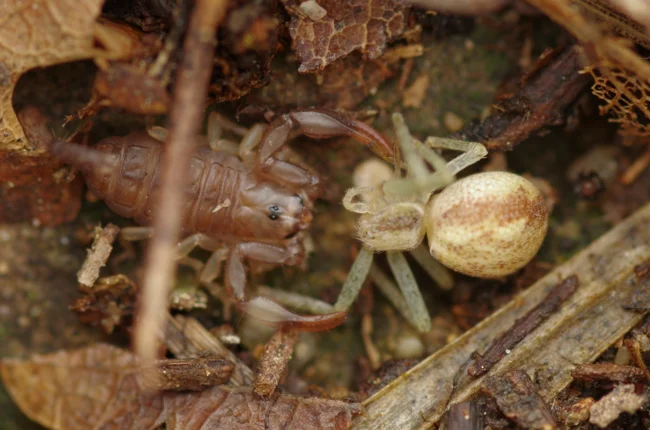
Well, eight-legged one, you're in trouble. I live here now!
First, it was brought to Venezuela, where it thrived. Then, quite unexpectedly, the yellow-tailed scorpion was discovered in... Britain! Currently, several colonies of scorpions, totaling up to 15,000 individuals, live in southern English cities and even in London. Thanks to their high ecological flexibility and ability to give birth live, they have become the northernmost scorpions in Europe! 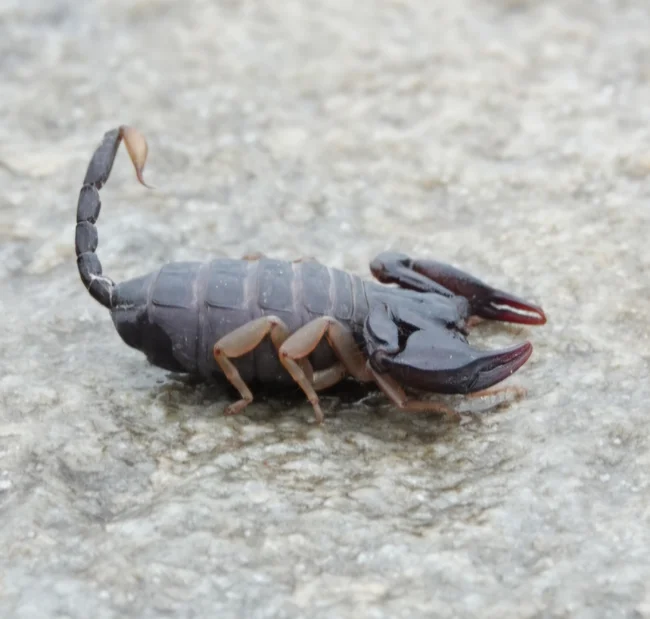
For some reason, I don't think you've ever seen a pregnant scorpion. 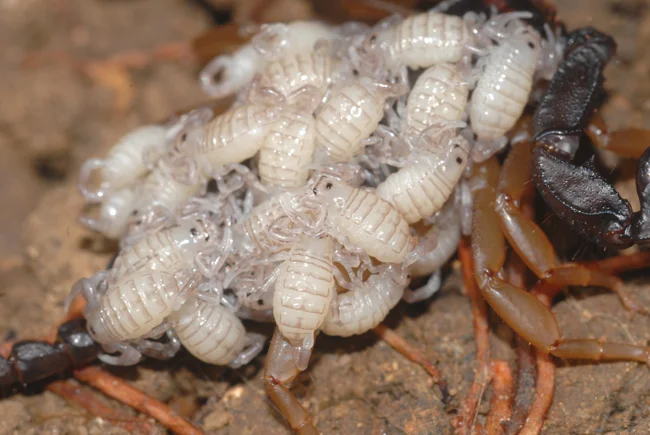
The caring mother is buried somewhere under a mountain of these babies.
Nomination Five: The Most Domestic Scorpion
Against the backdrop of all the exotic beauties listed above, the winner in this category looks surprising. After all, it's the Crimean scorpion, well-known throughout the CIS! 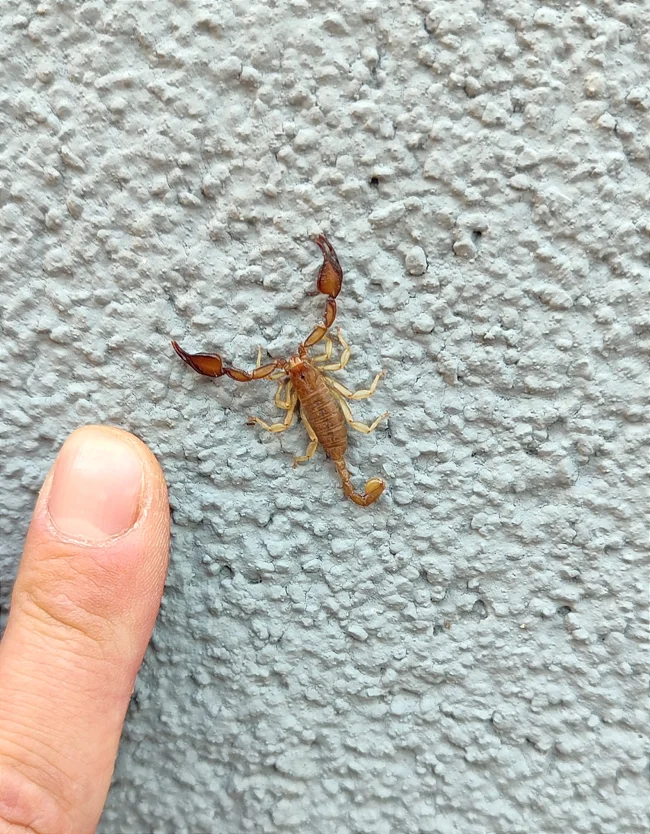
Who are you? This is my home!
In 2013, biologist Oleg Vitalyevich Kukushkin began analyzing 16 years of data on the Crimean scorpion. He discovered something strange: 92% of all recorded scorpion sightings occurred either directly in or near buildings. In Southern Crimea, the scorpion has never been found outside of populated areas, clearly placing it in the category of synanthropic, human-dependent species. 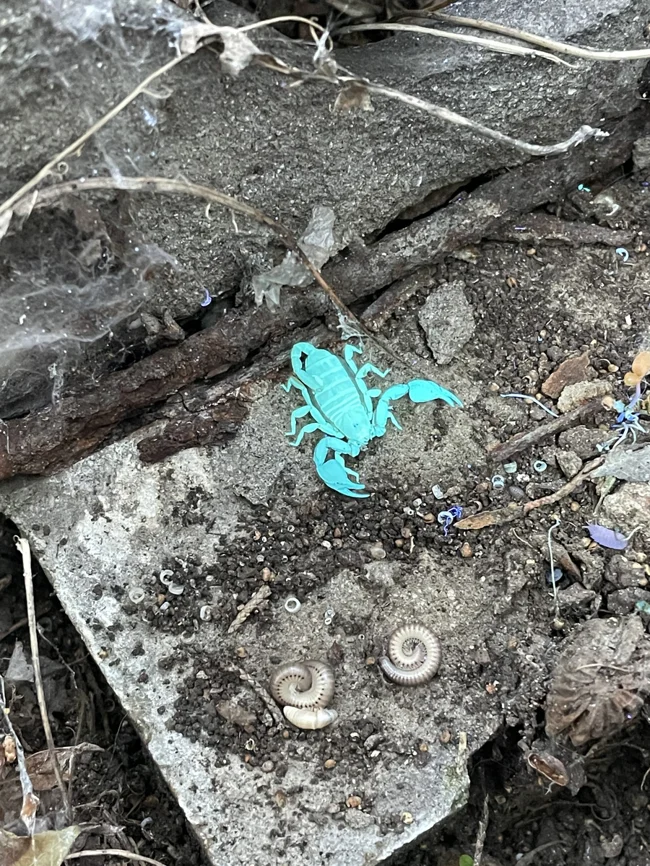
Why is the scorpion bright blue? Because it was exposed to ultraviolet light. Almost all scorpions become very bright under strong ultraviolet light. The purpose of this mechanism is still unknown.
It's worth acknowledging, however, that it's found far beyond residential areas. Commercial and industrial buildings, and even medieval ruins, are just as captivating!























